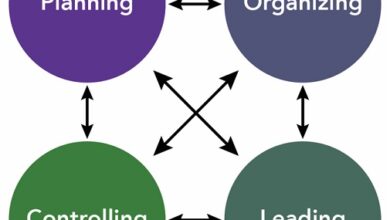Neurodegenerative Diseases
The generic term “neurodegenerative diseases” refers to a broad group of brain diseases with highly diverse neuropathological and clinical manifestations. These can affect movement, language, memory , reasoning, and many other abilities, resulting in a progressive loss of autonomy.
The complexity of this type of disease is related to the complexity of the brain , which governs our lives. In this article we will provide basic information and we will talk about some of the most frequent, taking Alzheimer’s as the main reference.
The causes and evolution of neurodegenerative diseases
In most cases, the causes that trigger the neurodegenerative process are unknown . In some diseases, genetic mutations are known that are directly attributed to the cause of the disease (what is often identified as “inherited”), such as Huntington’s disease.
In most cases, as is the case with Alzheimer‘s, genetics may have an influence as a risk factor , but it is not decisive . In Alzheimer‘s, genetics is only decisive in very rare cases in which the disease is caused by a genetic mutation. The research seeks to advance the knowledge of how genetic susceptibility interacts with environmental and lifestyle factors to modulate the risk of developing these diseases.
Another of the common features of neurodegenerative diseases, as we know happens in Alzheimer‘s disease thanks to research, is the existence of a long period prior to the manifestation of the first symptoms . In other words, a preclinical, silent phase , in which brain changes are produced that go unnoticed until the symptoms begin, which will develop in a cascade for years.
The evolution time and life expectancy after the onset of symptoms is highly variable, both between different neurodegenerative diseases and within one, and can be up to 20 years or more.
All these diseases, regardless of their particular characteristics, lead to a progressive disability and consequent dependence on third parties , which results in the need for someone to take care of the needs of the person with Alzheimer‘s, that is, a caregiver who also will require help and guidance to minimize the frequent feeling of overload .
In addition, neurodegenerative diseases are currently irreversible . Existing treatments alleviate the symptoms and allow a better quality of life, but they do not cure .
Types of Neurodegenerative Diseases
Huntington’s disease
Amyotrophic Lateral Sclerosis (ALS)
Multiple sclerosis
transmissible spongiform encephalopathy
Spinocerebellar Ataxia
Spinal Muscular Atrophy
Machado-Joseph disease
Some neurodegenerative diseases
It is estimated that there are a few hundred neurodegenerative diseases, with frequent overlapping of clinical and neuropathological characteristics among many of them, which entails, as we have commented, significant difficulties in classifying and accurately diagnosing them in many cases. The two most frequent neurodegenerative diseases are, in this order, Alzheimer’s and Parkinson’s diseases . Of them and of three others, much less frequent, but well known, we offer here their main characteristics:
Alzheimer disease
Alzheimer ‘s is the most frequent neurodegenerative disease and the main cause of dementia. The different types of dementia depend on the cause that originates it and, for this reason, dementia due to Alzheimer‘s disease is the best known.
Alzheimer‘s disease involves a set of cognitive and behavioral symptoms with a clear functional impact, progressively reducing the autonomy of the person who suffers from it.
Parkinson’s disease
Parkinson’s disease is the paradigm of neurodegenerative diseases related to movement disorders , whose three main symptoms are tremor, slowing of movements and muscle rigidity. These are accompanied by various changes in mood or behavior, impaired speech, sleep disturbances and some cognitive difficulties, leading to progressive disability.
Huntington’s disease
Huntington’s disease is rare compared to the above. Unlike most neurodegenerative diseases, in this case its cause is genetic , and therefore it is a hereditary disease. In addition, the onset of symptoms, although it can occur at any age, usually occurs between 30 and 40 years.
These symptoms are motor, cognitive and psychiatric, with great variability from one person to another. One of the most characteristic motor symptoms of this disease are the movements called “choreic”, which are involuntary, sudden, fast movements that the person cannot control.
Amyotrophic Lateral Sclerosis (ALS)
Amyotrophic Lateral Sclerosis is a rare (low frequency) neurodegenerative disease that affects neurons in the brain and spinal cord. It belongs to a broader group of diseases called “motor neuron diseases”, caused by a progressive degeneration and death of motor neurons, which establish communication between the brain, spinal cord and muscles throughout the body, to order the motion.
Gradually, all the voluntary control muscles will be affected, causing a progressive loss of strength and motor skills , affecting movement, speech and, ultimately, breathing. The symptoms can appear at any age, being the most frequent between 55 and 75 years. The majority of cases are “sporadic”, that is to say, not attributable to genetic causes but, as in the case of Alzheimer‘s and Parkinson’s, to the combination of different risk factors.
Frontotemporal dementia
Frontotemporal dementia is a neurodegenerative disease that is less frequent than Alzheimer’s disease and that usually manifests itself at earlier ages (before 65 years of age), affecting mainly regions of the brain, located in the frontal and temporal lobes, involved in the regulation of personality, behavior and language.
These changes in the brain can lead to different combinations of symptoms, including impulsive or socially inappropriate behavior, loss of empathy , or language disorders characterized by progressive difficulty expressing oneself or understanding the meaning of words .
How can the elderly prevent themselves?
Neurodegenerative diseases have no chance of cure. However, it is possible to prevent them through:
1 – Physical exercises
After practicing physical activity (such as running, swimming, bodybuilding, soccer, and dancing) neurotrophins are released in the brain, substances that help memory.
It is recommended that at least two hours of weekly physical activity be performed. However, it is essential to consult a doctor before starting any practice.
2-Active mind
Brain exercises (like learning a new language, playing musical instruments and reading frequently) are ideal for keeping your mind active and productive. Social activities are also considered essential for the mind.
3 – Adequate sleep
If we sleep poorly often, the brain will suffer small losses. After all, it is during sleep that we rest and absorb what we learn during the day.
Sleep is essential for memory, reasoning and concentration. However, the ideal duration may vary according to each age group.
4 – Balanced diet
What we consume throughout life makes a difference when we get older. A balanced diet is essential for maintaining health and preventing Alzheimer‘s.
Therefore, it is important to follow a balanced diet based on fruits, vegetables, olive oil, nuts and fish.



